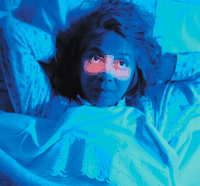This week in the BMJ
Volume 331,
Number 7526,
Issue of 19 Nov 2005
![[Down]](/icons/down.gif) Sedative use in older people with insomnia may not be advantageous
Sedative use in older people with insomnia may not be advantageous
![[Down]](/icons/down.gif) Women with treated CIN remain at increased risk of cervical and other cancers
Women with treated CIN remain at increased risk of cervical and other cancers
![[Down]](/icons/down.gif) Medically conceived twins have an increased risk of preterm birth
Medically conceived twins have an increased risk of preterm birth
![[Down]](/icons/down.gif) Ensure the basics for children in developing countries
Ensure the basics for children in developing countries
![[Down]](/icons/down.gif) UK patients want fast access to good care
UK patients want fast access to good care
Sedative use in older people with insomnia may not be advantageous
The risks and benefits of sedative hypnotics for treating insomnia in elderly people are about evenly balanced, say Glass and colleagues (p 1169). They carried out a meta-analysis of 24 randomised controlled trials involving more than 2400 participants aged 60 or over who received any drug treatment for insomnia. Sedative use improved the quality of sleep but also increased the risk of adverse events. The authors conclude that in elderly people, particularly those at risk of falls or cognitive impairment, the benefits of sedative use are outweighed by the risks.

| |
Credit: OSCAR BURRIEL/SPL
|
|
![[To top]](/icons/back.gif)
Women with treated CIN remain at increased risk of cervical and other cancers
In the first 20 years after treatment for cervical intraepithelial neoplasia (CIN) the risk of cervical cancer, and of most other gynaecological and smoking related cancers, is higher than in the average population. In a retrospective cohort study including more than 7500 women treated for CIN between 1974 and 2001 (p 1183), Kalliala and colleagues found that the peak incidence of invasive cervical cancer was during the second decade after treatment. They also observed that even women with low grade lesions are at increased risk of developing invasive cancer.

| |
Credit: SPL
|
|
![[To top]](/icons/back.gif)
Medically conceived twins have an increased risk of preterm birth
Compared with naturally conceived twins, twins resulting from subfertility treatment have a slightly decreased gestational age at birth and an increased risk of preterm birth. Verstraelen and colleagues (p 1173) carried out a population based cohort study of more than 4300 twin pairs and found an odds ratio of 1.6 (95% CI 1.4 to 1.8) for preterm birth after artificial induction of ovulation. The risk is however limited to mild preterm birth, which is mainly due to dizygotic twinning after subfertility treatment.

| |
Credit: MARK THOMAS/SPL
|
|
![[To top]](/icons/back.gif)
Ensure the basics for children in developing countries
Fortification of food with zinc and vitamin A is the most cost effective intervention for improving child health in developing countries with high child mortality. In another cost effectiveness analysis in the series on achieving the millennium development goals, Edejer and colleagues (p 1177) report that micronutrients and measles immunisation should be provided routinely to all children. The failure to rise to the challenge of malnutrition is threatening to hamper the child survival strategy, say the authors.

| |
Credit: SVEN TORFINN/PANOS
|
|
![[To top]](/icons/back.gif)
UK patients want fast access to good care
In light of the UK government's recently stated intention to include the public in shaping the future of the health service, Coulter (p 1199) examines the evidence on what patients and the public want. Patients care more about the quality of their interaction with doctors than about how the service is structured, she argues. Patients want fast access to good care, partnership rather than paternalism, and equitable care that is free at the point of use. Organising a healthcare system that will achieve these goals lies in the court of policy makers, however.

| |
Credit: ANTONIA REEVE/SPL
|
|
![[To top]](/icons/back.gif)
Sedative use in older people with insomnia may not be advantageous
Women with treated CIN remain at increased risk of cervical and other cancers
Medically conceived twins have an increased risk of preterm birth
Ensure the basics for children in developing countries
UK patients want fast access to good care




